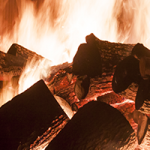What to consider when foraging for wood.
Foraging for firewood can be a great way of getting a supply of fuel for your fire without having to pay a penny, it can even be fun, but it’s important to keep in mind that it is illegal to gather such wood from commissioned woodland or private property without permission of the landowner. Its likely said landowner will allow you to gather wood off the ground, they may even ask you to help remove dead or dying trees, but law dictates that you must ask first. I for some reason you are refused, you can apply for scavenging permits.
Now, provided you have gained the legal right to do so, what is the best way to forage for firewood? Well, wood type is vitally important, but the size and quantity of the wood you collect is equally as important.
If you are making a small outdoor fire, you will want more small (kindling) wood branches and scraps. These are also good for starting any wood-burning fire as well as being the easiest to collecting large quantities.
For stoves, when you have a fire started, you should move up a size of wood pieces or logs. This can be chopped up from a dried log or chunks from the trunk of a dead tree. Whichever is more readily available. Obviously, this will be harder to transport in large numbers, and is more suitable for moderately large or stove fires after the fire has been started with kindling.
If you plan to forage for anything bigger, like for example a whole log, or part of a trunk, you will have fuel for potentially several fires in the future. However, heavier equipment would be needed to gather and transport such a quantity of firewood, and it will need to be dried first before you can cut it up and make use of it.





Leave a Reply
Want to join the discussion?Feel free to contribute!